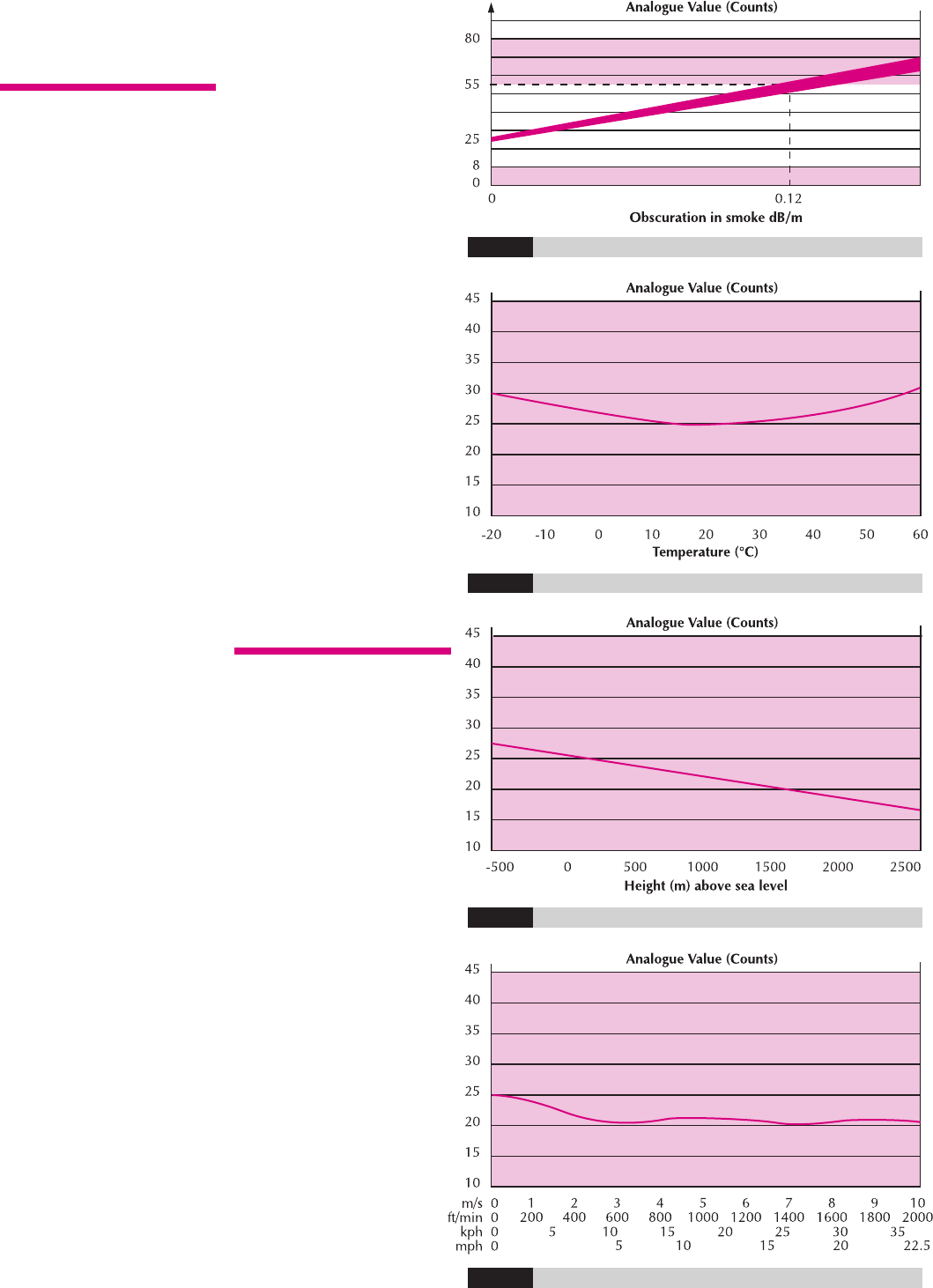
page
7
ELECTRICAL
DESCRIPTION
T
he detector is designed to
be connected to a two wire
loop circuit carrying both
data and a 17V to 28V dc
supply. The detector is
connected to the incoming
and outgoing supply via
terminals L1 and L2 in the
mounting base. A remote
LED indicator requiring not
more than 4mA at 5V may
be connected between +R
and -R terminals. An earth
connection terminal is also
provided, although this is
not required for the
functioning of the detector.
When the device is energised
the ASICs regulate the flow
of power and control the data
processing. The ionisation
chambers are energised and
the ultra low leakage sensor
ASIC provides a conditioned
analogue signal to the
analogue to digital (A/D)
converter within the
communications and
processing ASIC. When
smoke enters the ionisation
chambers through the integral
gauze, the voltage at the
sensing electrode increases to
produce an analogue signal.
An A/D conversion of the
signal from the ionisation
chambers is carried out once
per second or when either
the detector or preceding
address is being interrogated.
Whenever the device is
interrogated this data is sent
to the control equipment.
EN54 threshold alarm levels
are calibrated within the
processing ASIC. If the
device is not addressed
within 1 second of its last
polling and the analogue
value is greater than 55 the
alarm flag is initiated and
the device address is added
to the data stream every 32
p
olling cycles from its last
polling for the duration of
the alarm level condition,
except when the alarming
device is being interrogated.
This can provide a location
identified alarm from any
device on the loop in
approximately two seconds.
The detector is calibrated to
give an analogue value of
25±7 counts in clean air. This
value increases with smoke
density. A count of 55
corresponds to the EN54 alarm
sensitivity level. See Fig 3.
Counts of 8 or less indicate
fault conditions. Count levels
between 45 counts and 55
counts can be used to provide
an early warning of fire.
ENVIRONMENTAL
CHARACTERISTICS
XP95 ionisation smoke
detectors are designed to
operate in a wide variety of
environments (See Figs 4 to
6). There are only small
effects from temperature,
humidity, atmospheric
pressure and wind. Detectors
are well protected against
electromagnetic interference
over a wide frequency range.
The XP95 ionisation detector,
like all ionisation detectors,
has some sensitivity to air
movement (wind). The
extent to which the analogue
value will change depends
on the wind speed and on
the orientation of the
detector relative to the wind
direction. Relatively small
changes in wind direction
can cause significant changes
in analogue value.
Fig.3 Typical response characteristics - XP95 Ionisation Detector
Fig.4 Typical temperature response - XP95 Ionisation Detector
Fig.5 Typical pressure response - XP95 Ionisation Detector
Fig.6 Typicalwindspeedresponse- XP95IonisationSmoke Detector


















